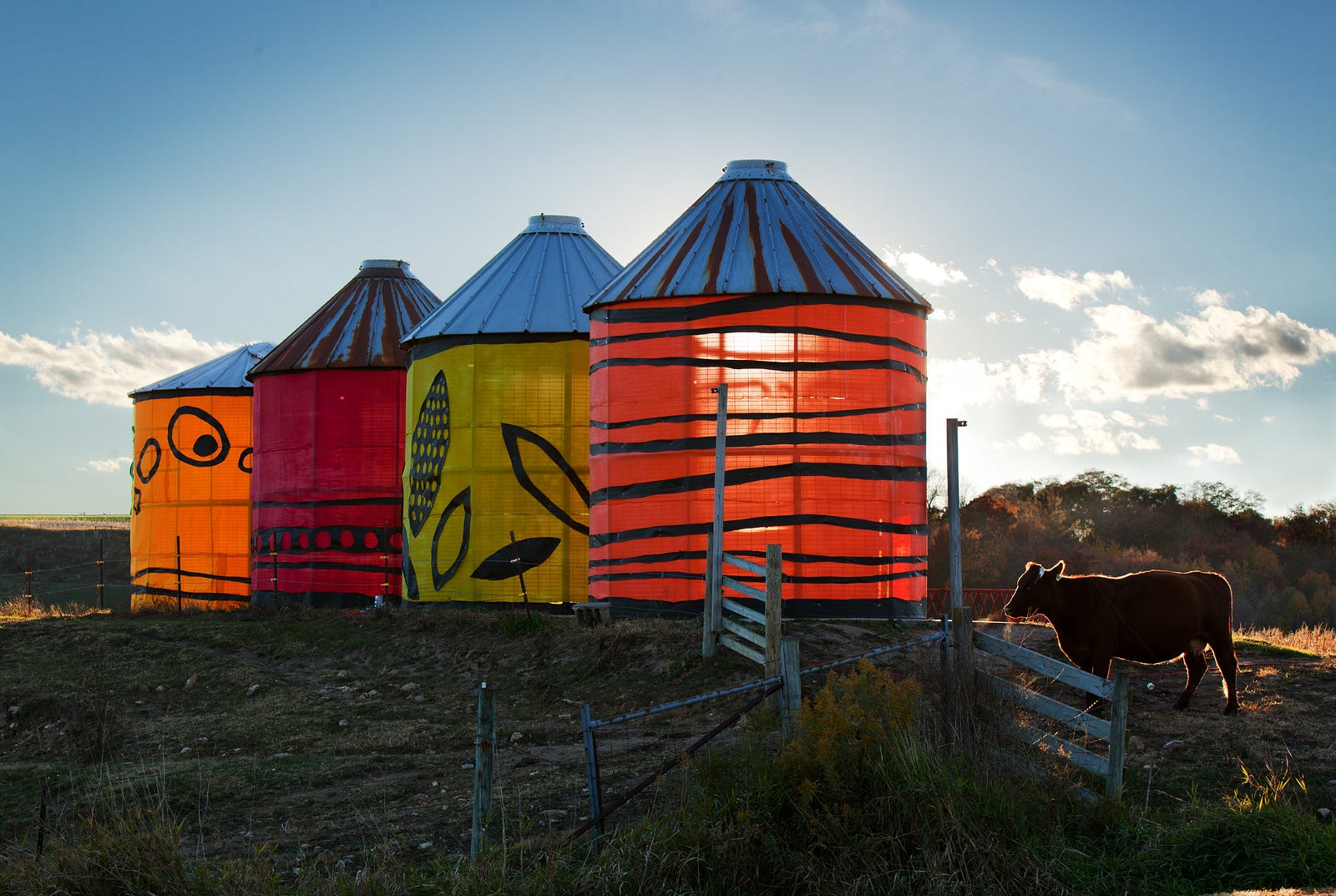The Creative Sector: A Proven Economic Catalyst for Rural America
Mar 8

Rural regions contain some of our nation’s most iconic landscapes and cherished heritage, yet many of them are struggling with persistent economic obstacles. Rural America is contending with the outmigration of young and skilled workers, low levels of educational
attainment, infrastructure needs (both physical and digital), rising poverty rates, barriers to health care and poor health outcomes and problems related to an evolving economy ― especially the loss of industry.
While the overall U.S. economy has rebounded from the most recent recession, rural areas have not shared equally in the gains. In spite of facing similar problems, some
rural areas have prospered since the Great Recession: They experienced population growth, earnings growth, higher household incomes and the ability to attract and retain workers.
The “secret sauce” for those prospering rural areas is their ability to leverage their creative sector assets to
catalyze economic and workforce development initiatives in those rural areas. An extensive body of research by economists at the U.S. Department of Agriculture and the National Endowment for the Arts has found:
· Rural counties that are home to performing arts organizations experienced population growth three times
faster and higher household incomes (up to $6,000 higher) than rural counties lacking performing arts organizations.
· Rural counties with design-driven businesses ― those that integrate branding and design services ― recovered more quickly from the recession, showing more
growth in weekly earnings over the period from 2010 to 2014.
· Two out of three rural businesses report that arts and entertainment are important to attracting and retaining workers.
A forthcoming action guide from the National Governors Association (NGA), in partnership with the National
Endowment for the Arts (NEA) and the National Assembly of State Arts Agencies (NASAA), describes three principles of arts-based rural
development for governors and other state policymakers.
· Creative sector initiatives are most effective when attuned to the particular creative assets and needs of rural communities.
· Those creative and cultural assets can be used as a springboard for local economic development ― that is, they can catalyze growth and amplify broader community planning and rural Main Street development.
· Creative sector initiatives add value when integrated with economic development, workforce development, community development and other state and local policies and practices.
When these principles are applied within a state’s existing policy framework, the steps can lift employment, wages and the quality of place in rural areas.
The action guide features numerous successful high-profile examples of states, regions and rural communities that have become more economically resilient and sustainable through creative sector initiatives. The Montana Artrepreneur
Program, for example, expands entrepreneurial opportunities for rural visual artists by providing personal coaching and other business and marketing training over 10 months. Artists who received certification through the program between 2009 and
2014 experienced, on average, a 650 percent net sales increase and an 87 percent increase in out-of-state sales.
Nebraska Gov. Pete Ricketts is promoting creative entrepreneurship by
providing access to “maker” equipment, such as 3D printers, through rural libraries. This is intended to help strengthen the maker culture in rural areas and expand the libraries’ roles as anchor organizations for economic development. The libraries are supported
by community action teams who are reaching out to residents and offering training.
States can similarly encourage rural community colleges to serve as anchors for creativity-based economic growth. Sheridan, a city in rural northern Wyoming, has been beefing up its creative economic development for more than a decade. It started by collaborating
with the Northern Wyoming Community College District to commission a cultural sector inventory and form a local Creative Economies Council. The Wyoming Arts Council funded the community college district’s theater and dance program organizations, which gradually
became prominent parts of the local asset portfolio. The state also contributed to funding the redevelopment of a Performing
Arts and Education Center affiliated with the local college ― all to the benefit of the surrounding rural region.
Every state has rural areas, including some that we don’t normally think about as being rural, such as New York and Maryland. In New York, interagency coordination has been the key to providing grants
focusing on workforce development incorporating the arts. The state’s Regional Economic Councils (REDCs), through the New York State Council on the Arts, are providing $5 million to support projects using the arts to foster workforce readiness and
development. Local organizations can apply to develop career-training programs in artistic fields, including internships and apprenticeships in collaboration with high schools, community colleges and four-year colleges. Also, grants for large capital improvement
projects through the Arts and Culture Facilities Improvement Grant Program are similarly
being offered through the REDCs. The projects are intended to promote accessibility, stability and sustainability of cultural arts facilities and strengthen tourism and business development statewide ― “including in rural communities where such investments
can be particularly impactful.” In 2018, the program awarded $20 million for capital improvement projects, and another $10 million is planned in 2019.
Further, some states have designated or certified creative districts that support workforce development. For example, in 2016, Maryland’s 24 state-designated Arts
and Entertainment Districts supported more than 8,500 jobs, which collectively yielded $267 million in wages, $63.2 million in local and state tax revenue and almost $856 million in state economic output. Today, Maryland has 26 such districts.
The Next Generation Initiative headquartered in rural Iowa is a collaboration between the Art of the Rural and the Rural Policy Research Institute at the University of Iowa to strengthen connections among the arts,
public policy and community and economic development. The Initiative’s web-based Digital Learning Commons and Exchange features how-to material
on rural “creative placemaking” which occurs when arts organizations and community development practitioners deliberately integrate the arts and culture into community revitalization work and engage partners from a range of sectors, such as agriculture and
food, and policy areas such as economic development, community development, housing and workforce development.
NGA’s forthcoming action guide, Rural Prosperity through the Arts and Creative Sector: A Rural Action Guide for Governors and States, outlines principles, process steps and further examples that
constitute an overall Systems Change Framework for rural America based on the creative sector. The Systems Change Framework is organized according to five key roles for governors and states: providing leadership; capitalizing on cultural assets; building the
state’s infrastructure for creative partnerships with other policy areas; developing local talent with creative skills and creating an environment friendly to investment and innovation. The guide will be released March 12, 2019. Follow the conversation on
Twitter with the hashtag #ruralarts.
